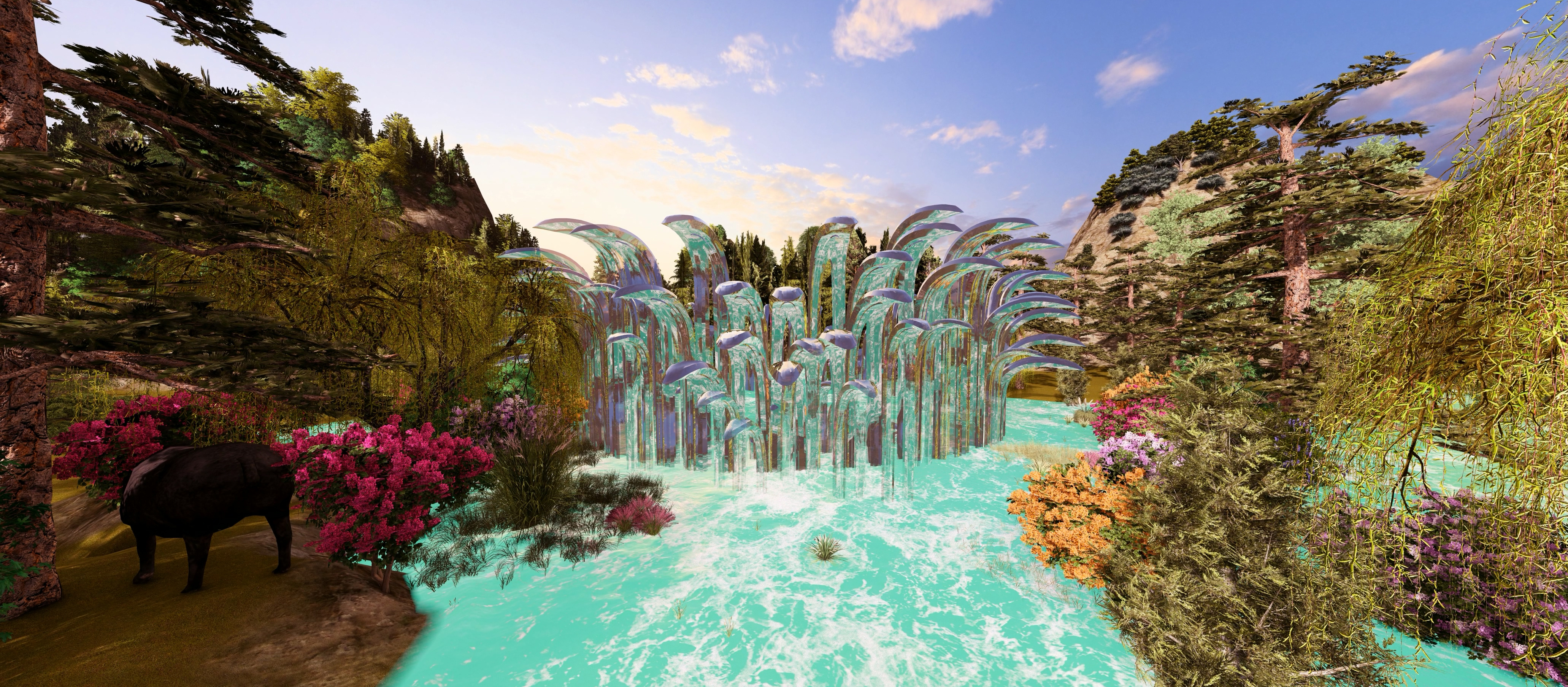Concrete Opera

<Concrete Opera_콘크리트 오페라>, Architectural motion graphic, 3D animation, 08min 20sec, 2024
LG ART Center Seoul Commission
LG아트센터서울 커미션
LG아트센터
2024.05.03-2024.05.25
LG Art Center Seoul, Korea
:우수선정 및 연장전시 2025년(현재)
주최: LG 전자, LG 아트센터, 메세나
협력: NIA
<계속 열리는 문과 사후세계로 연장되는 미끄러지는 장소성>
콘크리트 오페라는 콘크리트의 물성과 오페라의 이름을 가진 컬러의 조합이다. 또한 안도다다오의 정체성인 콘크리트 건축양식이 LG아트센터의 화려한 공연(오페라) 공간에서 융합된 지점이 강조되었다. 즉, 콘크리트를 통해 감각하는 오페라적 장소감각을 제안하고자 한다.
동시대의 공간성은 물성에 제한되지 않으며, 디지털 세계와 가상 세계로 인해 무한히 확장된다. 실재하는 물리적 건축구조물에 발을 딛고 서있는 것에서 시작되는 장소성의 감각은 빛을 매개로 하여 점차 확장된다. 발을 딛고 서있는 LG 아트센터 서울의 건축물은 포트키(portkey차원이동장치)로써 특정 부분만 스캐닝되어 건설된 가상 공간의 건축물로 이끈다. 중간세계의 빛이 이끄는 곳 너머에는 이세계-사후세계가 펼쳐진다. 죽음 이후 미지 속 건축물은 중력과 시공간 개념에서 해방되어 얻게된 새로운 형태와 질감, 운동성과 활기를 통해 새로운 미감을 제시한다. 이러한 공간 확장의 시각화는 공간감각의 유의미함에 대한 물음을 제기하며, 확장된 공간성에 대한 소통의 장을 마련한다.
<Continuously Opening Doors and the Slippery Spatiality Extending into the Afterlife>
Concrete Opera is a combination of the materiality of concrete and the chromatic resonance evoked by the name “opera.” It highlights the convergence between Tadao Ando’s architectural identity—characterized by exposed concrete—and the glamorous, theatrical space of LG Arts Center. In other words, it proposes an operatic sense of place experienced through the sensorial qualities of concrete.
Contemporary spatiality is no longer constrained by materiality; it expands infinitely through the digital and virtual realms. The sense of place that begins with standing on a physical, architectural structure is gradually extended through the mediation of light. The building of LG Arts Center Seoul, where one physically stands, becomes a portkey—a device for dimensional passage—leading to a virtually reconstructed architectural space, selectively scanned and built. Beyond the light guiding through this liminal world lies another world—an afterlife. In this post-death, unknown architecture, freed from gravity and the conventional notions of space-time, new forms, textures, movement, and vitality emerge to suggest an entirely new aesthetic experience. The visualization of such spatial expansion raises questions about the significance of our spatial perception and opens a discursive field for communicating the notion of expanded spatiality.





